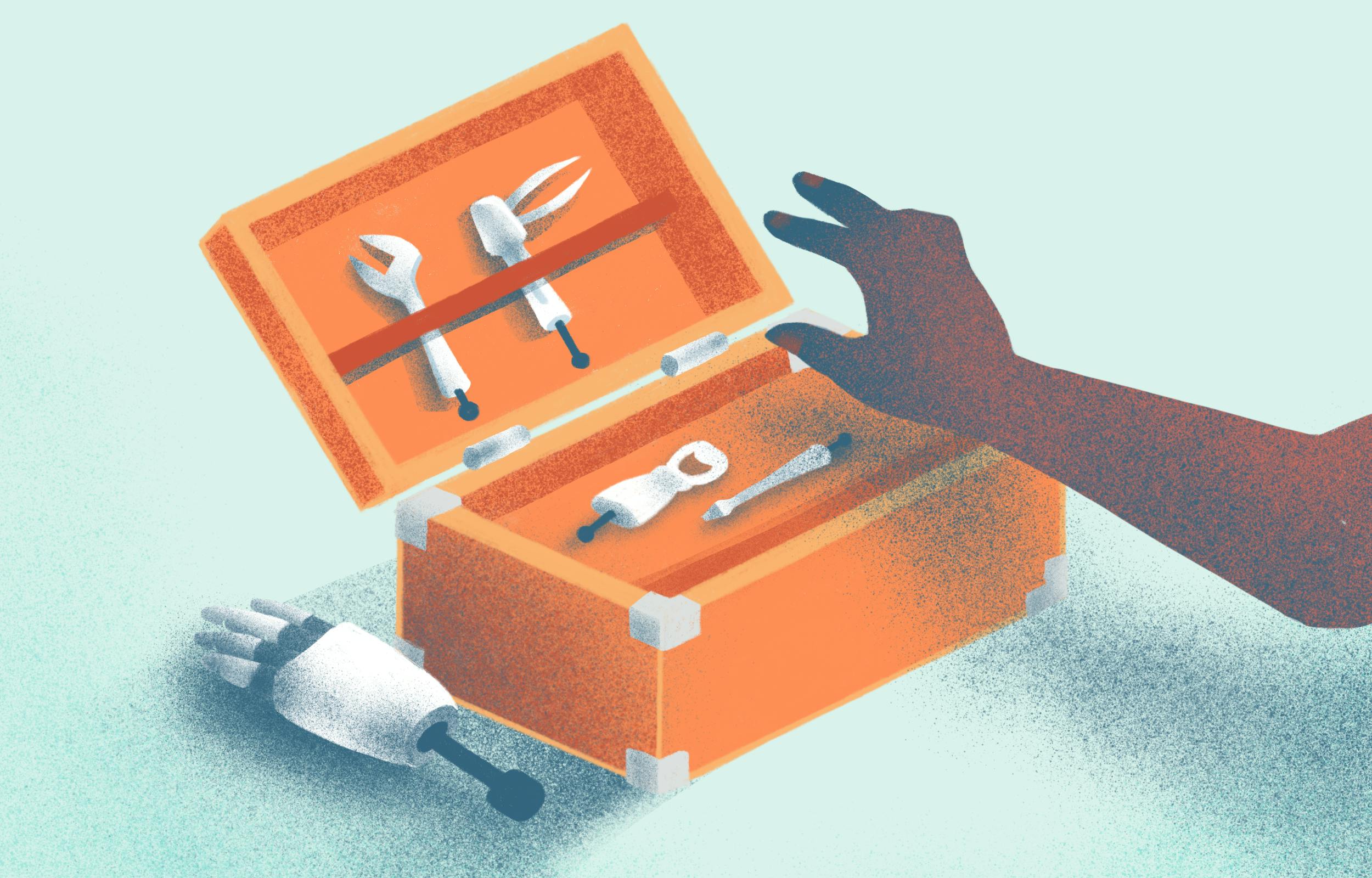What if prosthetics looked less like hands—and more like tools?
Imagine an arm prosthetic that, instead of resembling a human hand, ends with tweezers or a wrench.
No, this isn’t a remake of Edward Scissorhands. This is the potential future of upper-limb prosthetic devices, as imagined in a recent study from the Santa Lucia Foundation in Rome.
The study used virtual reality to model new kinds of bionic tools in place of traditional hand prosthetics. Think a wrench or tweezers—maybe not scissors.
Why take this approach to prosthetics? It’s all about a concept called ‘embodiment.’

Embodiment in prosthetics
The question researchers were trying to answer was not just whether these utilitarian tools could be prosthetics.
“Our question was, can human beings merge with tools? Can we merge biology and technology?” said study co-author Ottavia Maddaluno, a neuroscientist at the Santa Lucia Foundation. “And our results find out that, surprisingly, we can.”
But would these tools make good prosthetics? In other words: Would upper-limb amputees actually want to use them?
In the prosthetics field, embodiment refers to how well a prosthetic fits with a person—not just mechanically, but more holistically. Does the user feel ownership over their prosthetic limb? How well does it help them process the world?
Why does this question matter? Especially with upper-limb prosthetics, long-term use is a perennial problem innovators are solving for. Around half of upper-limb prosthesis patients abandon their prosthetics—due to discomfort, dysfunction, and lack of embodiment.
So why would a prosthetic that looks even less like a natural hand be a good candidate for upper-limb amputees?
In fact, appearance has been named a factor for prosthesis rejection. Neuroscientists and prosthetic developers have long relied on the idea of biomimicity as an indicator of likely embodiment. In other words, the field has assumed that more ‘lifelike’ prosthetics are more likely to be accepted by the brain.
The research team’s hypothesis: Perhaps a prosthetic’s function can make embodiment stronger, trumping aesthetics. After all, tool-mediated embodiment has been used by amputees in other settings—such as running blades or blind people’s white canes.
In this VR-based study, that hypothesis appeared to ring true. Participants reported feeling equally or even more embodied with tool-based upper-limb prosthetics as with more ‘natural’ hand prosthetics.
New horizons for VR in medtech
One potential big win coming out of this study: If bionic tools may work just as well or even better than traditional, ‘lifelike’ prosthetics, effective prostheses may become more accessible for more patients. After all, these alternative prosthetics would be less expensive to produce.
Speaking of accessibility, another exciting aspect of this study is how it uses VR. We’ve been excited about how VR and XR are enhancing medicine and medical training for a while. This study is a perfect example of how VR can expand our assumptions of what’s possible, disrupting the status quo of a whole field.
Building on a history of VR-based testing in prosthetics, the team used a VR version of the “rubber hand illusion” in their experiment. Vibrations were sent to participants’ hands while flashing lights corresponded to the same spot on the virtual hand—then, the participant would report where the vibration happened. When a participant consistently makes errors, this indicates more embodiment of the virtual limb.
Of course, there are limitations to extrapolating from VR-based studies. Real, physical devices may perform differently than their perfect virtual counterparts. Plus, in this study, none of the participants had preexisting amputations—that’s the research team’s next research goal.
However, there is value to broadening our imaginations before spending time, money, and resources creating physical products. While some may not pan out beyond proof of concept, there is much we can uncover about potential solutions—and even how the body works—through these digital, virtual experiments. This is also why the growth of digital twins in medicine is so compelling.
For now, we’ll be tuning in to the research team’s progress as they continue to assess their broadened vision of embodiment. And perhaps we are due for an Edward Scissorhands rewatch—from a strictly scientific perspective, of course.